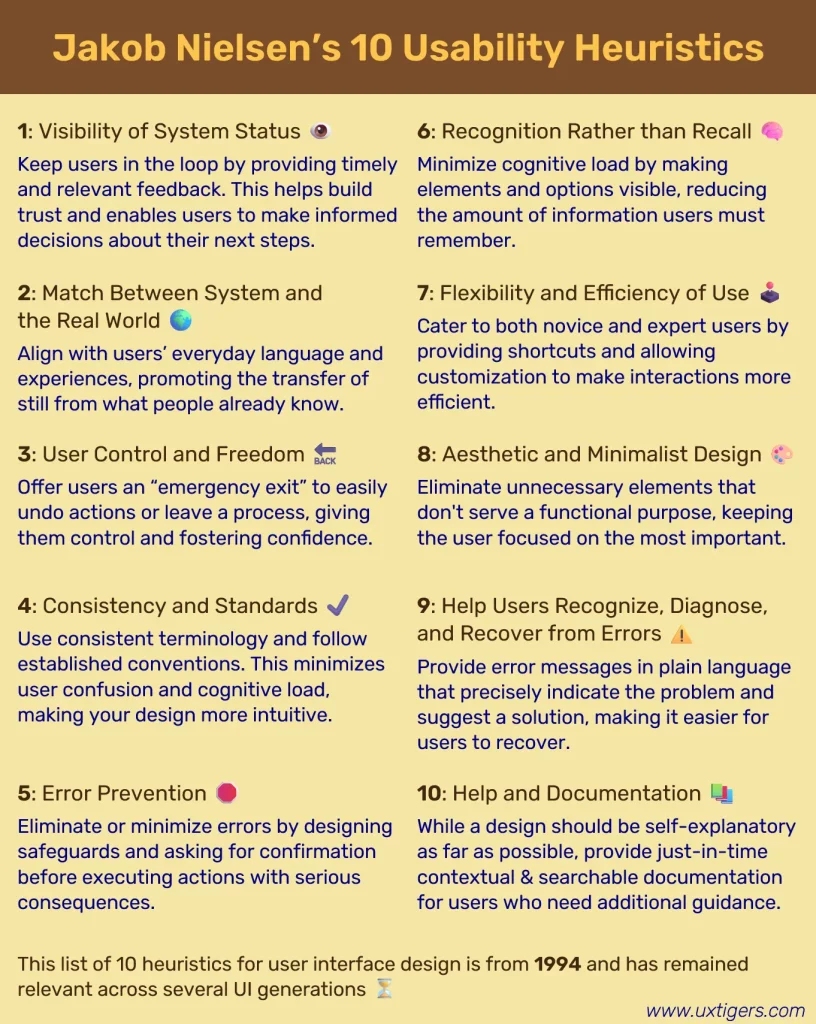In heuristic evaluation, we evaluate an interface’s strengths and weaknesses using well-established criteria. These heuristics, developed by Jakob Nielsen, include factors like system status visibility, consistency, error prevention, and minimalist design.

While Nielsen’s 10 usability heuristics provide a solid foundation for evaluating interface design, there are additional aspects of usability that may not be fully addressed by these principles. These are additional usability heuristics that complement Nielsen’s heuristics:
- Accessibility: Ensure that the interface is usable by individuals with disabilities, including considerations for screen readers, keyboard navigation, color contrast, and alternative text for images.
- Inclusivity: Design interfaces that accommodate diverse user populations, including different cultural backgrounds, language proficiencies, geological locations, and technological literacy levels.
- Performance: Optimize the interface’s speed and efficiency for users, minimizing distractions and loading times while maximizing responsiveness.
- Error Recovery: Assess the interface’s ability to guide users in recovering from errors, including clear error messages, intuitive error handling mechanisms, and the ability to revise or undo actions.
- Learnability: Examine how easily new users can understand and navigate the interface, including considerations for intuitive design, onboarding processes, and user assistance features.
- Feedback and Communication: Provide timely and informative feedback to users, including confirmation messages, progress indicators, and notifications for events, while not being distracting or annoying to users.
- Cross Platform Support: The interface should be adaptable across all platforms, including considerations for touch gestures, screen size variability, and responsive design principles.
- User Engagement: The interface should captivate and retain user interest, with possible interactive elements, gamification features, and personalized or customizable experiences.
- Trust and Security: Ensuring that the interface instills confidence and trust in users, including considerations for data privacy, secure transactions, and transparent communication about security measures.
- Ethical Design: Evaluating the interface’s adherence to ethical principles and user-centered values, including considerations for integrity, transparency, and respect for user autonomy.
By incorporating these updated usability heuristics into the evaluation process, designers and researchers can gain a more comprehensive understanding of the interface’s strengths and weaknesses, leading to improved user experiences for all.
